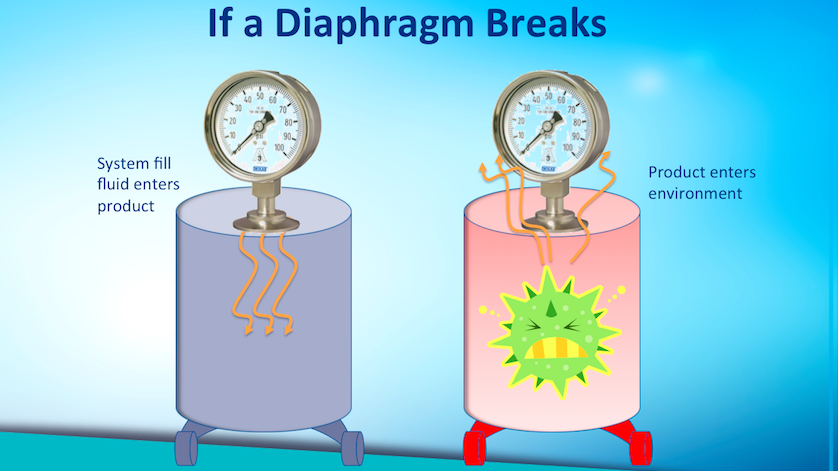
In bioethanol production processes, engineers must closely monitor pressure, temperature, level, and flow in order to ensure safe and efficient operations. Diaphragm seals in these applications do double duty: protect pressure measurement instruments from the medium, and prevent the escape of harmful emissions into the environment.
To convert biomass to biofuel, an ethanol plant uses several processes:
- Heating and adding water and enzymes to convert the starches of the crushed plants into fermentable sugars.
- Fermenting the mash with yeasts to convert sugars into ethanol and carbon dioxide.
- Distilling the ethanol to separate it from the residual mash.
- Rectifying the ethanol to clean it.
- Drying/dehydrating the ethanol to remove water.
For each of these critical steps, operators must maintain temperatures, levels, and pressures within specific range. However, process conditions and media put a toll on measuring instrumentation, adversely affecting both the accuracy and durability of the equipment. When process media clog connection points, the results are measurement inaccuracies, errors, instrument damage, and failures. When instruments break down, fugitive emissions are released into the environment – creating safety hazards. The solution? Diaphragm seals.
What Are Diaphragm Seals?
A diaphragm seal is a thin, flexible wall between the pressure measuring instrument and the process medium. The pressure that the process applies to the diaphragm is hydrostatically transmitted to the sensing element of the instrument. The physical barrier between the instrument and the medium eliminates clogging and crystallization, which minimizes corrosion. A diaphragm seal also protects the instrument’s sensing element from high temperatures by dissipating and/or conducting heat.
Diaphragm Seals by WIKA
WIKA USA manufactures several types of diaphragm seals that meet the particular needs of bioethanol production applications. The 990.xx lineworks well with hot and corrosive media. 981.xx INLINE® sealshave been designed with the biotechnology industry in mind. Capsule seals are a good match for contaminated and highly viscous media. Flow thru seals are also a good option.
WIKA’s diaphragm seals feature:
- A broad selection of materials, including several grades of stainless steel and alloys
- Easy installation and maintenance.
- Metal-bonded, no-weld construction for increased corrosion resistance.
- No temperature limitations.
- Wide selection of accessories, including flushing rings and ports, saddle and block flanges, capillaries, and cooling elements.
Diaphragm Monitoring System for Extra Protection
Even the toughest diaphragm seals wear out over time. Consequences of a broken seal can be catastrophic in critical bioethanol production processes such as fermentation and distillation. If a diaphragm breaks, hazardous media can escape into the environment, leading to safety risks. Leaks also result in costly shutdowns and time-consuming startups.
To ensure continuous and safe operations, WIKA has developed a diaphragm monitoring system. In this patented system, the space between the primary and secondary diaphragms is a hard vacuum, monitored by a pressure gauge and transmitter. If the primary seal is breached, the system triggers an alarm. Meanwhile, the secondary diaphragm continues to protect the instrument from the medium until the primary seal can be replaced. With a double-diaphragm system, the process continues uninterrupted.
WIKA’s team of experts has decades of experience in measuring and monitoring temperature, pressure, flow, and level for the chemical and biochemical industries. Contact WIKA USA todayto find out how to improve reliability in all your production processes.
Click here to download the white paper “Monitoring Safety & Efficiency: The Importance of Measuring Level, Flow, Pressure, Temperature, and Force in Hydropower Plants”


